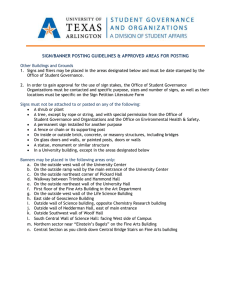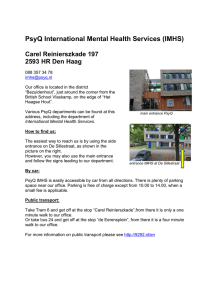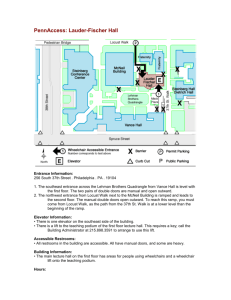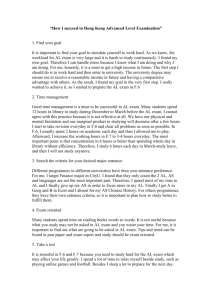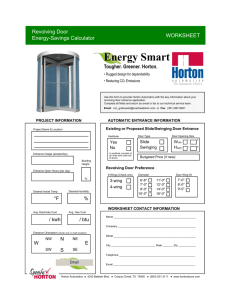ARTICLE 9 – VISITABILITY CODE Section 25-901. PURPOSE.
advertisement
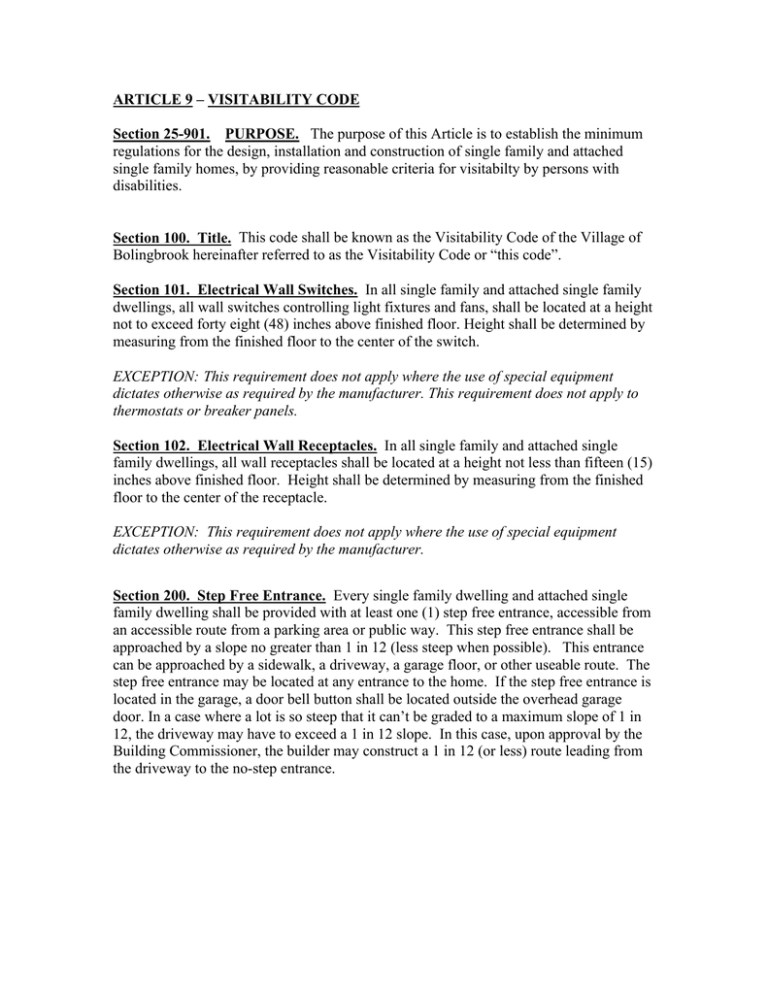
ARTICLE 9 – VISITABILITY CODE Section 25-901. PURPOSE. The purpose of this Article is to establish the minimum regulations for the design, installation and construction of single family and attached single family homes, by providing reasonable criteria for visitabilty by persons with disabilities. Section 100. Title. This code shall be known as the Visitability Code of the Village of Bolingbrook hereinafter referred to as the Visitability Code or “this code”. Section 101. Electrical Wall Switches. In all single family and attached single family dwellings, all wall switches controlling light fixtures and fans, shall be located at a height not to exceed forty eight (48) inches above finished floor. Height shall be determined by measuring from the finished floor to the center of the switch. EXCEPTION: This requirement does not apply where the use of special equipment dictates otherwise as required by the manufacturer. This requirement does not apply to thermostats or breaker panels. Section 102. Electrical Wall Receptacles. In all single family and attached single family dwellings, all wall receptacles shall be located at a height not less than fifteen (15) inches above finished floor. Height shall be determined by measuring from the finished floor to the center of the receptacle. EXCEPTION: This requirement does not apply where the use of special equipment dictates otherwise as required by the manufacturer. Section 200. Step Free Entrance. Every single family dwelling and attached single family dwelling shall be provided with at least one (1) step free entrance, accessible from an accessible route from a parking area or public way. This step free entrance shall be approached by a slope no greater than 1 in 12 (less steep when possible). This entrance can be approached by a sidewalk, a driveway, a garage floor, or other useable route. The step free entrance may be located at any entrance to the home. If the step free entrance is located in the garage, a door bell button shall be located outside the overhead garage door. In a case where a lot is so steep that it can’t be graded to a maximum slope of 1 in 12, the driveway may have to exceed a 1 in 12 slope. In this case, upon approval by the Building Commissioner, the builder may construct a 1 in 12 (or less) route leading from the driveway to the no-step entrance. 25-41 Section 201. Wall Reinforcement. Bathroom walls shall be provided with wood blocking installed flush within wall framing, to support grab bars as needed. The wood blocking, when measured to the center, shall be located between thirty three (33) inches and thirty six (36) inches above the finished floor. The wood blocking shall be located in all walls adjacent to a toilet, shower stall or bathtub. All bathrooms, washrooms and powder rooms shall meet all applicable requirements of this code. Section 202. First Floor Washroom/Powder Room. There shall be at least one washroom/powder room, containing at least 1 water closet (toilet) and one lavatory (sink), on the dwelling floor located closest to grade level. This washroom/powder room shall be designed and constructed in a manner that will provide wheelchair access to both the water closet and lavatory. EXCEPTION: If a no step entrance is located at a level other than the level closest to grade, such as the lower level of a split level home, and a washroom or powder room, that complies with the requirements of this code, is located on the same level as the no step entrance, a first floor washroom/powder room shall not be required. Section 203. Washroom/Bathroom Design. All washrooms, bathrooms and powder rooms shall meet all applicable requirements of this code. It is not essential (although it is helpful) to have a large turning radius inside a residential washroom, bathroom or powder room. In a small washroom, bathroom or powder room, the wheelchair user can roll in forward and roll out backward. A minimum thirty two (32) inch clear path must be provided to all fixtures and the room must be designed in a manner that will allow the user to be able to shut the door when using the room. The bathroom, washroom or powder room door may be hinged to swing out to provide more room, if the hallway design provides the proper clearances. Section 204. Doors and Hallways. All exterior and interior doors shall not be less than three (3) feet in width and six (6) feet eight (8) inches in height, and shall provide a minimum clear opening of thirty two (32) inches. All required exit doors shall be side hinged. The minimum width of a hallway or exit access shall not be less than forty two (42) inches, and in no way shall the width of the hallway be less than required by the 1997 Illinois Accessibility Code. EXCEPTION: Sliding doors, providing that a minimum thirty two (32) inch clear opening is maintained. Interior pocket doors, providing that a minimum thirty two (32) inch clear openning is maintained. Interior doors that do not require passage for access as determined by the code official, for example, doors to linen closets and pantries in which the shelves are located immediately inside the door opening. Any interior door located in a manner that when fully open, a minimum thirty two (32) inch clear opening is provided. 25-42 Section 205. Routes Within a Dwelling Unit. Every single family and attached single family dwelling shall have an accessible route through the hallways and passageways of the floor level served by the step free entrance. Hallways shall not be less than forty-two (42) inches in width. All other passageways, other than doorways, shall not be less than thirty six (36) inches in width. 25-43
